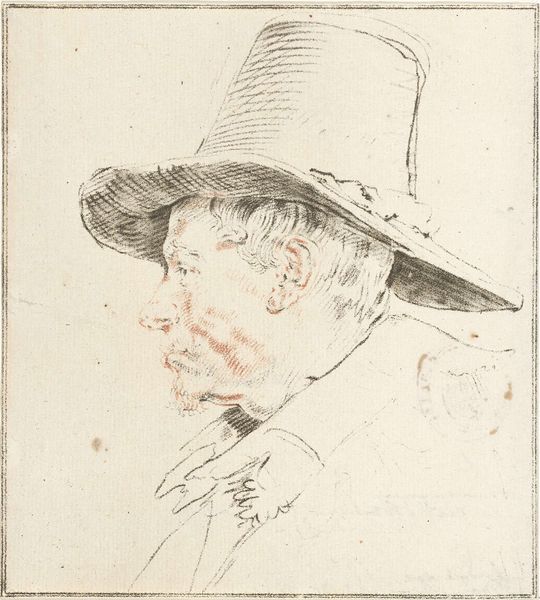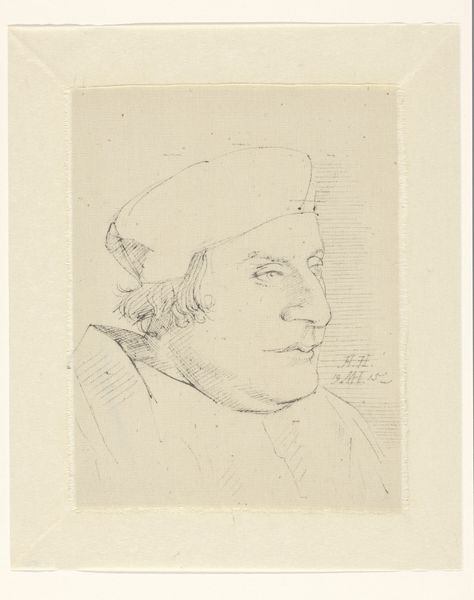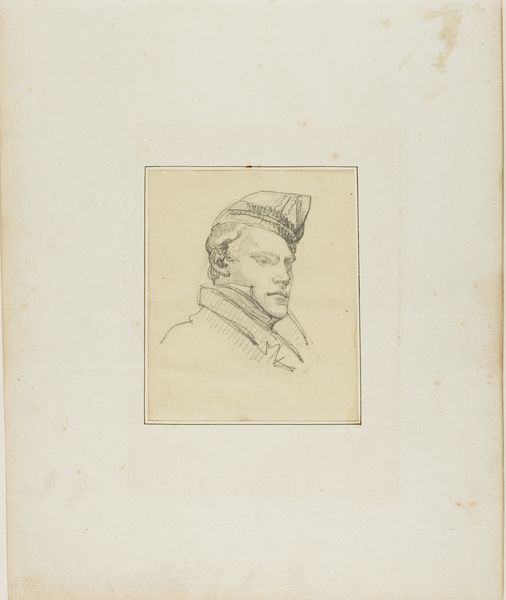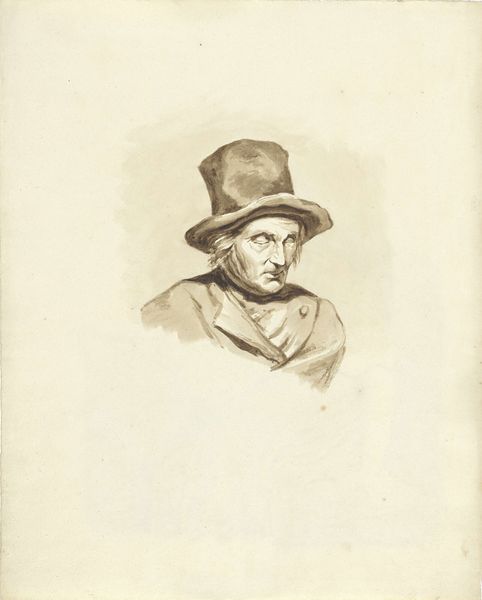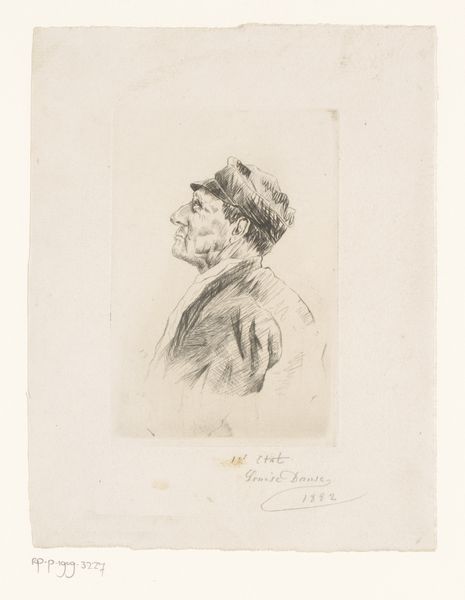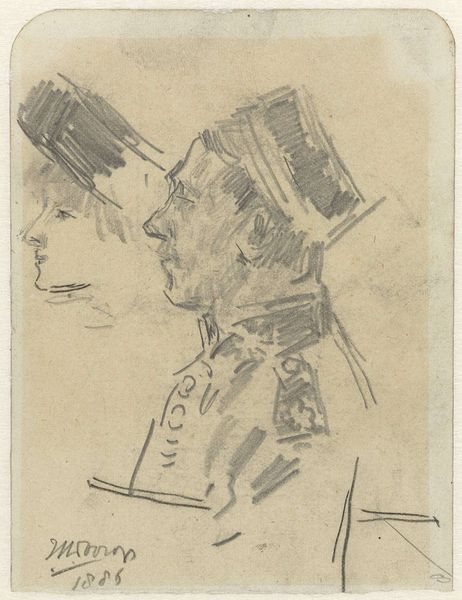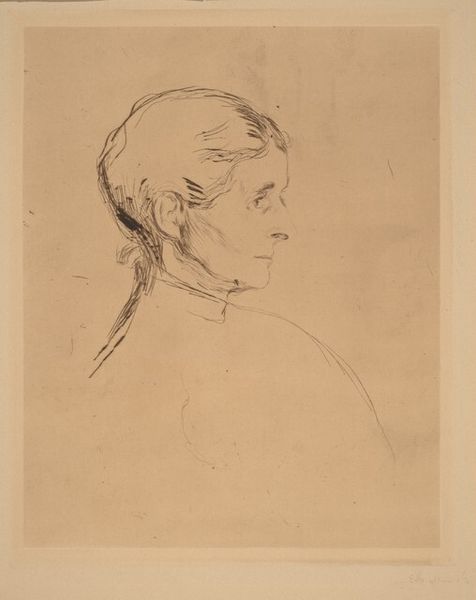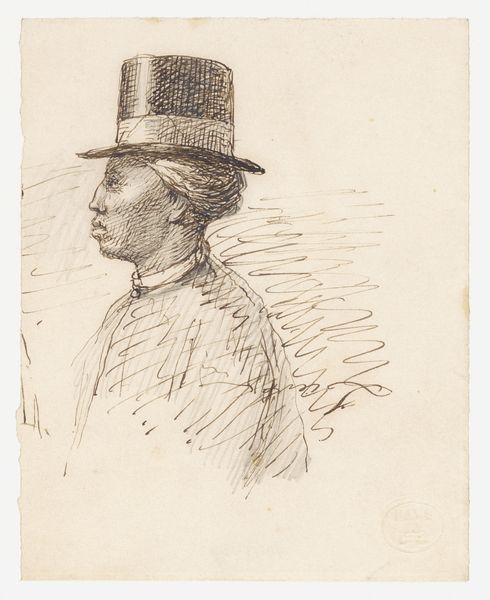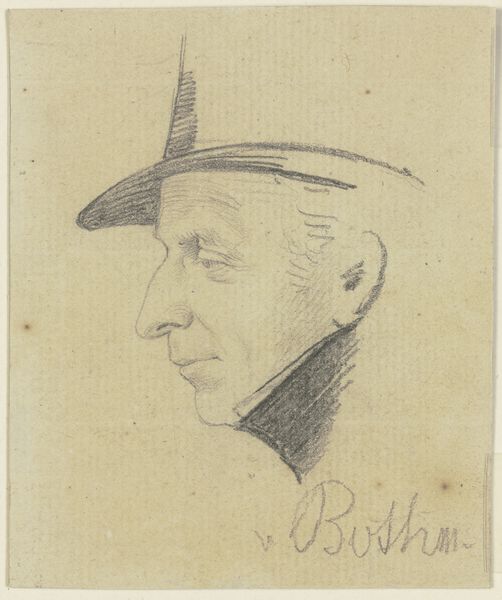
drawing, pencil
#
portrait
#
pencil drawn
#
drawing
#
pencil sketch
#
pencil drawing
#
pencil
#
portrait drawing
#
academic-art
#
realism
Dimensions: 132 mm (height) x 127 mm (width) (bladmaal)
Curator: Before us, we have Wilhelm Marstrand's "Mandshoved," created sometime between 1810 and 1873, a humble pencil drawing held here at the SMK. Editor: There's something incredibly fragile about this image, almost like it's a half-formed thought. The simplicity is very captivating; I wonder, who was this man and what was their story? Curator: It is the simplicity itself I would argue makes it very affecting: pencil drawings, for instance, democratize artistic creation by allowing for accessibility in art making and dissemination of knowledge, providing educational opportunities, yet is labor-intensive craftsmanship frequently gets overlooked because we tend to prioritize oil paintings. Editor: True. And yet, look how much Marstrand achieves with such basic tools. You can feel the artist carefully studying the subject, tracing the subtle curves of the face. The light catches the brow just so, casting this shadow that gives him such depth. I can almost feel his quietness. Curator: We can consider, though, how drawings function within an academic context, not always meant for the public gaze. Pencil marks allow the artist to make swift adjustments in lines and tones, achieving academic realism through carefully studied proportions and modelling of the human form, or more specifically a portrait. But let's not forget where those materials originate from - think about the social systems that made even a humble pencil accessible. Editor: And yet, here we are centuries later, pondering this fleeting likeness. What do you make of its almost incomplete nature? There is all this empty space, maybe that gives space for the subject's spirit and story, as if its essence somehow floats above it. Curator: Indeed, and consider this drawing in relation to artistic training—a preparatory study or sketch to refine one’s draftsmanship before executing larger, more elaborate pieces, which speaks of the value of craftsmanship, labor division, and institutional hierarchies prevalent during that period. Editor: It’s intriguing how this 'unfinished' quality gives it this vulnerability, which transcends its purpose in the art making and forces us to consider its subject's inner life. Curator: A compelling thought. Thanks, as always, for bringing your insightful lens to this work! Editor: Likewise. It's these quiet pieces, in their simplicity, that often resonate the most.
Comments
No comments
Be the first to comment and join the conversation on the ultimate creative platform.
